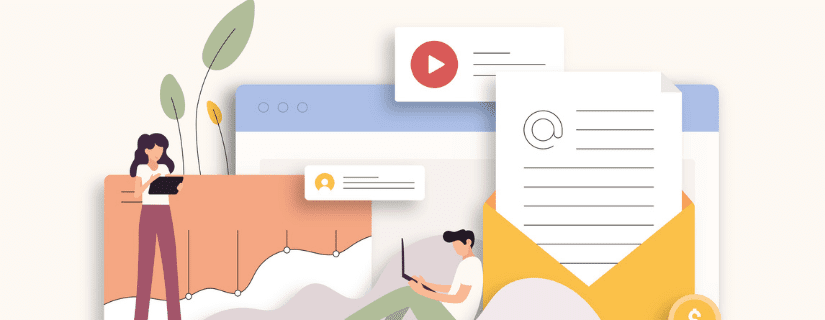
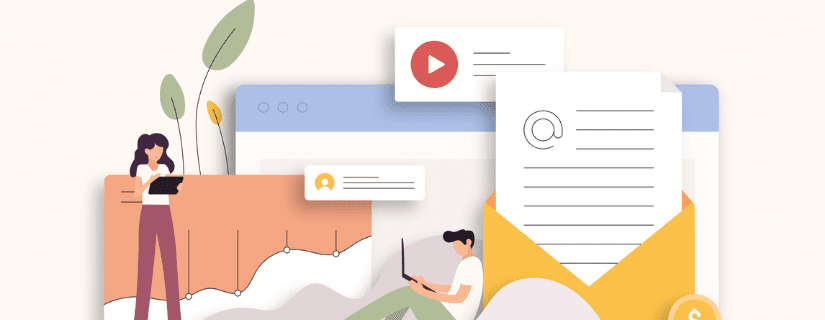
Successful B2B marketing automation requires thought and preparation but once up and running, can do serious heavy lifting for your sales funnel.
Now you might be wondering how exactly one should use marketing automation for B2B. What are the most effective B2B automation techniques and tactics for nurturing leads?
Well, you’ve come to the right place.
Whether you’re trying automation for the first time or ramping up an existing strategy, you’ll learn five different ways to use marketing automation for maximizing B2B sales.
But first, let’s make sure we’re clear on how B2B marketing automation differs from B2C.
What’s the difference between B2B vs B2C marketing automation?
Marketing automation is a way for companies to keep in regular contact with leads and customers.
Marketing automation for B2B shares the same principle as B2C marketing automation: triggering an automated message or series of messages in response to email subscriber activity.
While both focus on targeting subscribers with the right message in real-time, their approaches are different.
B2C focuses heavily on personalization. B2B, on the other hand, is less about personalization and more about education.
B2B marketing automation nudges leads towards conversion by nurturing them with helpful, educational content.
5 ways to use B2B marketing automation for high-impact results
1. Lead nurturing
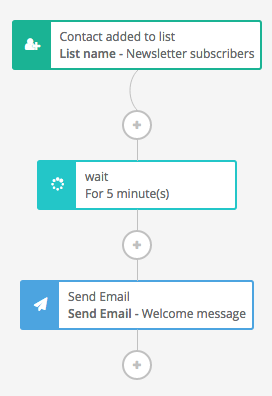

Lead nurturing refers to using automated email marketing to inform and nurture leads. Guiding leads through the acquisition cycle is the most common use case for B2B marketing automation.
This tactic works particularly well in the B2B industry where leads require a large amount of trust and education before making a purchase.
Once a lead signs up to your list, follow up with targeted content until the lead is warm enough to be passed off to the sales team.
Lead nurturing does two things: 1. It tracks leads as they move along the buyer’s journey and 2. lets you adjust your digital marketing tactics and messaging according to the different steps.
The best marketing automation workflows to build B2B relationships include:
- Welcome email sequences to introduce new subscribers to your brand/product
- Email marketing sequences following gated content (i.e. free downloadables or webinar signups)
- If/then/else sequences depending on specific lead activity (page visits, email opens and clicks, etc.)
How to set up a lead nurturing workflow
Start your lead nurturing workflow at the earliest possible point in the sales funnel. This could be when a lead subscribes to your newsletter or requests a product demo.
Once the lead enters the workflow, tailor your communications according to their area of interest and follow up at regular intervals so they don’t forget about you.
For example, depending on the landing pages visited, you can send an automated email campaign with related content. Check out these B2B lead nurturing examples for inspiration.
2. Lead scoring
Just as B2B leads need to be nurtured, they also need to be qualified. By this we mean putting in place a system to show which stage a lead is at in the buyer journey.
As mentioned, B2B acquisition cycles are lengthy. For a B2B marketer whose job is to send high-quality leads to sales, timing is everything. So what’s the best way to achieve this?
Introducing the idea of a lead scoring model—giving leads a ‘score’ to denote their engagement level.


Use marketing automation to you assign ‘points’ to leads whenever their interactions suggest a growing interest in your brand (clicking an email link, browsing a product page, etc.).
With Sendinblue this consists of creating a custom CRM attribute for the score, determining the actions that deserve points, then setting up an automation workflow that’ll add points to the score.
What’s more, the lead score itself can serve as an automation trigger. For example, using the score to trigger a specific email or move the contact to another email list (we’ll talk more about automated segmentation later).
It might sound complicated, but really it’s not. Get all the details in our step-by-step guide to creating a lead-scoring model.
3. Multi-channel campaigns
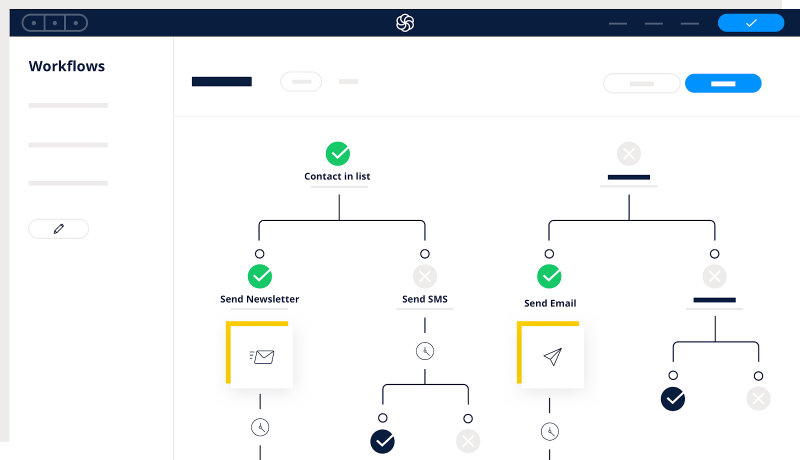
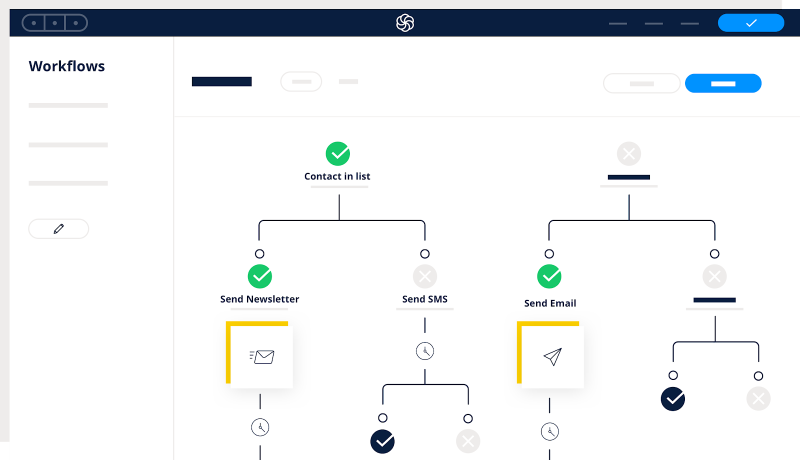
Maximize your campaign reach and brand awareness by triggering relevant automated communications across different channels.
If you’re just getting to grips with marketing automation, focus on mastering one channel first. Simple email nurture campaigns are an easy way to start.
Once you’re more comfortable—and if your marketing automation software has the necessary features—try your hand at a multi-channel approach.
Multi-channel automation, as the name suggests, targets leads at multiple touchpoints along the buyer journey through multiple channels.
This could be a combination of email, SMS, retargeting ads on social media sites like LinkedIn, or even direct mail. Experiment to discover which marketing channels work best for your target audience.
4. Segmentation & customer profiling
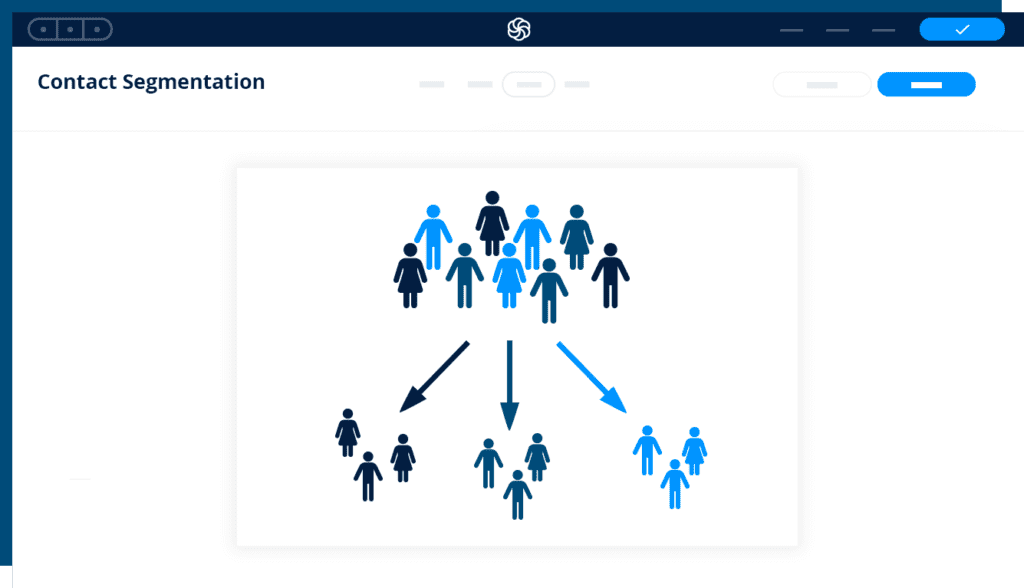

Did you know you can use marketing automation to update your contact lists and CRM?
We highly recommend segmenting your B2B leads according to their activity, engagement, and other shared characteristics.
Why do this? Because email list segmentation leads to more relevant messaging and higher engagement.
Automating list management is a huge time-saver for any business.
Set up is easy if your automation platform, like Sendinblue, offers dynamic segmentation. Create automation workflows that move contacts to specific lists depending on web pages visited, email engagement, etc.
A marketing automation platform should either have its own CRM component or integrate with your existing CRM. Use automation to keep this database up to date by automatically assigning attributes to individual customer profiles.
5. Page tracking
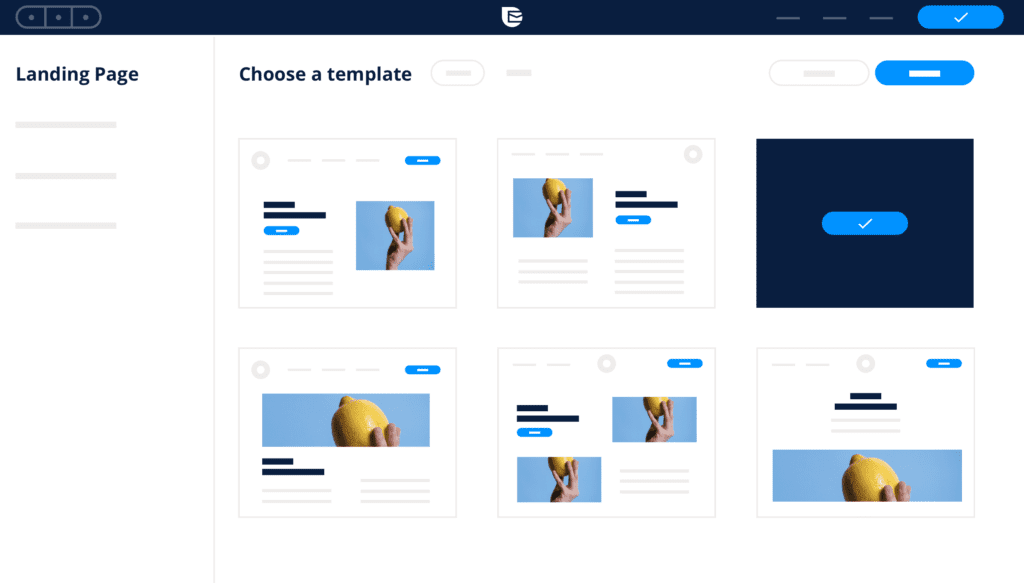

Page tracking here refers to using website behavior to trigger automated B2B campaigns.
‘Website behavior’ means visiting specific landing pages and/or clicking a particular link. Basically, whatever a lead gets up to on your website.
It’s a prime opportunity to follow up directly with more information, be it related to pricing or a certain product.
Now you might be wondering, how would I know when a lead is browsing the website?
Good question!
To put it simply, you’d first have to install a tracking code (like the Sendinblue Tracker) on your website. This’ll identify whenever a subscriber opens an email or clicks a link on your website.
All you need to do is insert a Javascript snippet into your website header as you would for Google Analytics. Full instructions available here.
(Keep in mind that the Sendinblue Tracker only functions with ‘identified’ visitors, i.e. those who have already signed up to your email list)
B2B marketing automation best practices
Quick tips to keep you on track for best results.
- Know the different steps in your sales cycle and map out the lead journey before configuring automation workflows. Cover all the key steps from discovering your brand to converting. This’ll form the basis of your automation workflows.
- Get the messaging right at each step in the workflow
- Establish the metrics you want to track and monitor them regularly. Sure, the whole point of marketing automation is that it runs by itself in the background but ‘set it and forget it’ isn’t the right approach either. Always look for ways to optimize your workflows for better engagement.
- Your email lists should be 100% opt-in (i.e. organic subscribers). Always include unsubscribe links for leads to opt out at any time.
- Clean email lists regularly by removing unengaged leads. This’ll keep engagement rates high and maintain better email deliverability.
How to choose the best B2B marketing automation software
As marketing automation grows in popularity, marketing automation services have become accessible to even the smallest of businesses.
Marketing automation tools have varying price-tags and feature sets. Some are geared towards small businesses and ecommerce, whereas others are a better fit for enterprise marketing.
While a lot will depend on your budget, there are certain key features to look out for in a marketing automation platform.
- Multi-channel marketing campaigns for different customer journeys
- Visitor/page tracking to know who’s looking at your website and how they are using it
- Reporting and analytics for evaluating performance
- Segmentation to separate your lists based on different criteria like contacts’ behavior or interests
- Lead management for different stages of the customer journey, from lead generation and capture to nurturing
- A/B testing of different customer journeys and content to automatically select the best performing option
Above all, your B2B marketing automation software needs to be smart, easy to use, and allow for timely content marketing delivery.
Sendinblue’s marketing automation suite is free for up to 2000 subscribers. Test-drive it now on our free plan. No credit card required, cancel anytime.
Try Marketing Automation with Sendinblue
Wrap up
Hopefully we’ve inspired you with ideas to take your B2B marketing automation strategy to the next level.
Implemented the right way, these tactics go a long way in maximizing sales potential.
Have you got any other tried-and-true strategies for B2B automation? Let us know in the comments below; we’d love to hear from you!
 Deutsch
Deutsch




















